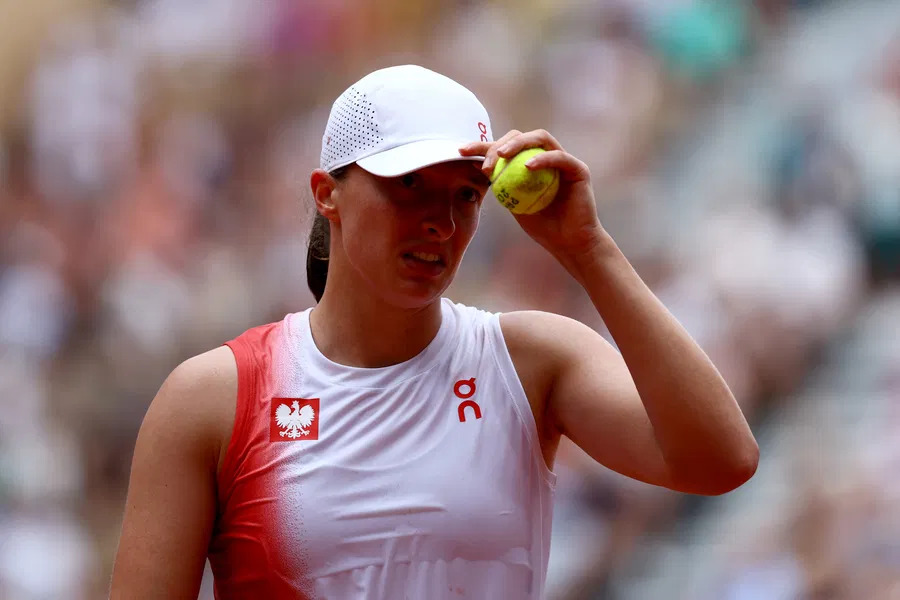
The recent shift in the women’s tennis landscape, marked by Aryna Sabalenka’s ascension to the world number one spot at the expense of Iga Swiatek, has sparked intense debate and discussion. As tennis fans and analysts try to dissect how Sabalenka managed to overtake the Polish superstar, it is essential to understand the role of new WTA rules and how they have influenced player rankings and the competitive environment.
### The Impact of New WTA Rules
The crux of the matter lies in the WTA’s implementation of a new rule requiring players to participate in a minimum of 21 tournaments each season. This includes four Grand Slam events and 10 WTA 1000-level tournaments, followed by six WTA 500-level events. If players do not meet this requirement, they face the possibility of point deductions mid-season.
In Swiatek’s case, this new regulation led to her losing 120 ranking points, allowing Sabalenka to leapfrog her in the standings with a total of 9,706 points. The new structure aims to encourage participation in various events but has also raised concerns among players about the strenuous demands placed on them.
### Swiatek’s Concerns About Scheduling
Iga Swiatek has been vocal about her reservations regarding the number of tournaments players are expected to participate in. In a previous interview, she stated, “I think we have too many tournaments in the season. It’s not going to end well. It makes tennis less fun for us. Obviously, I love playing in all these places, but it’s pretty exhausting.” This sentiment resonates with many players who face the dual challenge of maintaining peak physical condition while navigating an ever-increasing schedule.
CoCo Vandeweghe, a former WTA professional, echoed these concerns on the TC Live Podcast, stating, “I think it’s ridiculous that the WTA is asking all these players to play these many events. I went through this personally. It was a little bit less [tournaments], but when you’re Top 10, you’re required to play certain events, and if you don’t, you’re subjected to a fine.” Such comments illustrate the growing frustration among players about the intense demands of professional tennis.
### Andy Roddick’s Perspective on Swiatek
Adding to the conversation, former ATP player Andy Roddick recently shared his views on the current ranking scenario during an episode of “Served with Andy Roddick.” Roddick predicted that Swiatek would not be in a hurry to reclaim her top spot, suggesting that she is taking a long-term view of her career. “I like that she’s gotten to that point in her career where she’s taking the long view on this. She’s not in a rush to get it back. It’s obviously not a priority for her,” he explained.
Roddick noted that Sabalenka had a significant lead over Swiatek, which made the upcoming tournaments crucial for both players. Sabalenka needed only to reach the final at Cancun to secure her year-end number one ranking. However, the WTA Finals turned out to be a significant event for Swiatek, as she clinched her first title at the tournament with an impressive 5-0 record, highlighting her resilience and ability to perform under pressure.
### What Lies Ahead for Iga Swiatek
As the tennis season nears its conclusion, many are wondering if Iga Swiatek can reclaim her crown. Former Russian tennis player Natalia Vikhlyantseva weighed in, expressing that while Sabalenka has a great chance to finish the year as the world number one, Swiatek would not yield her position easily. “Even though she is already tired of the season, she will not give it to her for free,” Vikhlyantseva remarked.
The implications of the new WTA rules and the ranking changes cannot be understated. They add another layer of complexity to an already demanding sport. Players must balance the rigorous schedule with their physical and mental health, which can be a precarious tightrope. As more tournaments approach, the competition will only intensify, and the quest for the top ranking will remain fiercely contested.
### Conclusion: A New Era in Women’s Tennis
The recent dethroning of Iga Swiatek by Aryna Sabalenka has opened the door for discussions about the future of women’s tennis, the role of the WTA in shaping the sport, and the effects of increased tournament participation requirements. As these young athletes navigate their careers, they will be challenged not only by their opponents but also by the structural demands of the sport.
Fans are eager to see how the dynamic between these two exceptional players unfolds as they head into the final stretch of the season. With both Sabalenka and Swiatek determined to prove themselves, the competition promises to be exhilarating. Whether Swiatek can reclaim her top ranking remains to be seen, but one thing is clear: the women’s game is entering a thrilling new chapter filled with potential and fierce rivalry.
As the dust settles on this latest chapter in women’s tennis, it’s important to remember that with every new rule comes a shift in the balance of power. As players adapt, evolve, and challenge one another, the landscape of the sport will undoubtedly continue to change, keeping fans on the edge of their seats for what comes next.
Leave a Reply